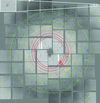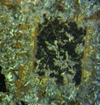issue contents
July 2015 issue

editorial
MATERIALS | COMPUTATION
This Editorial surveys the current status and recent developments in the structural science of materials as exemplified by the articles recently published in IUCrJ.
scientific commentaries
BIOLOGY | MEDICINE
Several structures of membrane transport proteins in complex with mechanistically-relevant ligands, determined by serial femtosecond crystallography of microcrystals at an X-ray free-electron source source, are presented. These results, including investigation of approaches to data quality assessment and refinement from low-redundancy data, indicate the feasibility of using this approach for ligand screening.
research papers
CHEMISTRY | CRYSTENG
Download citation


Download citation


Modularity and three-dimensional isostructurality of novel synthons in sulfonamide–lactam cocrystals
Novel supramolecular synthons for primary sulfonamides with cyclic amides (GRAS coformers) are introduced for the crystal engineering of pharmaceutical cocrystals of sulfa drugs. The cocrystals of this model study exhibit isostructurality and isosynthons mediated by SO2NH2⋯CONH hydrogen bonding.
CHEMISTRY | CRYSTENG
Download citation


Download citation


Crucial `purification' steps inherent to the `selection' of particular molecular conformations and supramolecular synthons in solution leads to a successful synthetic strategy for ternary solids, a normally difficult exercise in crystal engineering. This work also suggests a parallel between such strategies and combinatorial chemistry.
BIOLOGY | MEDICINE
The structure determination of P-type ATPase–ligand complexes from microcrystals by serial femtosecond crystallography using a free-electron laser is described. The feasibility of the method for ligand screening is demonstrated, and SFX data quality metrics as well as suitable refinement procedures are discussed.
PDB reference: P-type ATPase–ligand complex, 4xou
PHYSICS | FELS
Viscous sample delivery that decreases the net protein consumed in serial femtosecond crystallography is described. The agarose stream has a low background, is compatible with membrane proteins and can be used at a wide range of temperatures.
PDB reference: phycocyanin, 4z8k
feature articles
BIOLOGY | MEDICINE
Advancements in source stability, X-ray optics, detectors, goniometry, data-collection strategies and data reduction and phasing software made over the past decade have placed native SAD at the verge of becoming a `first-choice' method for both de novo and molecular-replacement structure determination.
MATERIALS | COMPUTATION
The most recent research in charge spin and momentum density is presented and discussed.
MATERIALS | COMPUTATION
The synchrotron through-the-substrate X-ray microdiffraction technique is applied to the structural study of microvolumes of randomly oriented crystals embedded in polished thin sections. The whole procedure is discussed in detail with the help of examples from petrology, and possible future developments are envisaged.
topical reviews
NEUTRON | SYNCHROTRON
Neutron crystallography and sub-atomic X-ray crystallography complement each other in defining hydrogen positions in macromolecules. Significant advances have been made but much effort is still required if neutron crystallography is to become a mainstream activity.
PDB reference: 5akr



 journal menu
journal menu




 access
access





















